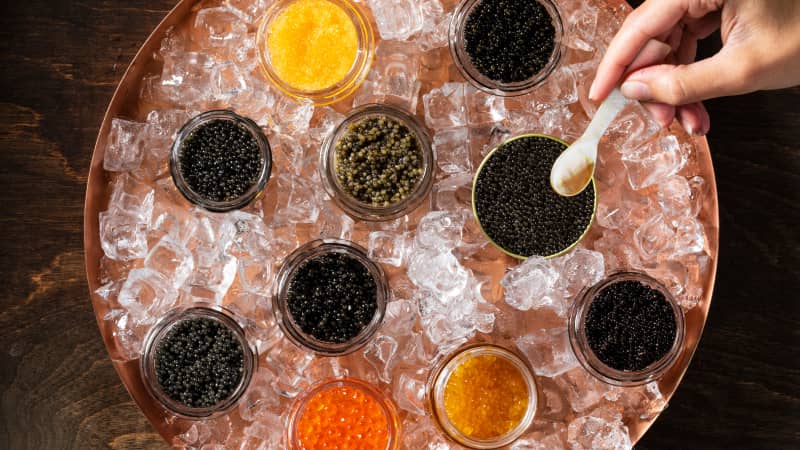Buckwheat Pancakes (Blini)
Recipe
Everything you always wanted to know about caviar (but were afraid to ask).
Published Oct. 6, 2021. Appears in America's Test Kitchen TV Season 23: Beef Wellington

Caviar is a food that’s steeped in mystique. Few of us have eaten it in any great quantity, yet almost all of us have strong ideas about what it signifies. For many, caviar is more a concept than a thing to be consumed. Some see it as the pinnacle of culinary luxury, an epicurean tradition with an aura of Old World decadence. Others see it as an emblem of conspicuous consumption.
The reality is both more simple and more complicated than our assumptions. Yes, it is a product with roots in Russia. And yes, over the centuries, it has become an expensive, rarefied good. But it wasn’t always this way. And caviar is no longer exclusive to Russia, if it ever was. While most of the caviar now sold around the world is extracted from fish farmed in China, the United States has its own history with this storied delicacy. In fact, for a brief period during the 19th century, the United States was actually the world’s leading producer of caviar. The craft continues today across a wide swath of the country, with caviar and roe made everywhere from North Carolina to Oklahoma to California.
To learn more, we tasted nine of the most widely available varieties of caviar and roe currently produced in the United States. We also consulted with more than a dozen farmers, fishers, retailers, aquaculture specialists, U.S. Fish and Wildlife Service agents, and food scientists to get the scoop.
First things first: There’s caviar, and then there’s roe. Both are essentially salted fish eggs. It’s commonly accepted that caviar is made solely from the eggs of sturgeon, an ancient family of bony fish. Roe, by contrast, comes from any other type of fish. There’s no standard of identity for caviar in the United States, though. While the U.S. Food and Drug Administration mandates that the term “caviar” by itself be used only in reference to sturgeon fish eggs, legally, producers can sell products such as “salmon caviar,” “whitefish caviar,” or “paddlefish caviar” as long as they make it clear which other fish the eggs are coming from.
In part, the distinction is historical. The first caviar was made centuries ago, in what is now Russia and Iran, from the eggs of sturgeon caught in the Caspian Sea. There are three quintessential types of Russian caviar, each made from a different species of sturgeon: sevruga; osetra; and the most prized of all, beluga. For hundreds of years, sturgeon were plentiful in the Caspian—so much so that, as writer Richard Adams Carey explains, caviar was enjoyed by rich and poor alike in Russia. As late as the 18th century, it “cost no more than butter and other staples, and in fact was u...
The mission of America’s Test Kitchen Reviews is to find the best equipment and ingredients for the home cook through rigorous, hands-on testing.

Miye is a senior editor for ATK Reviews. She covers booze, blades, and gadgets of questionable value.

This is a members' feature.